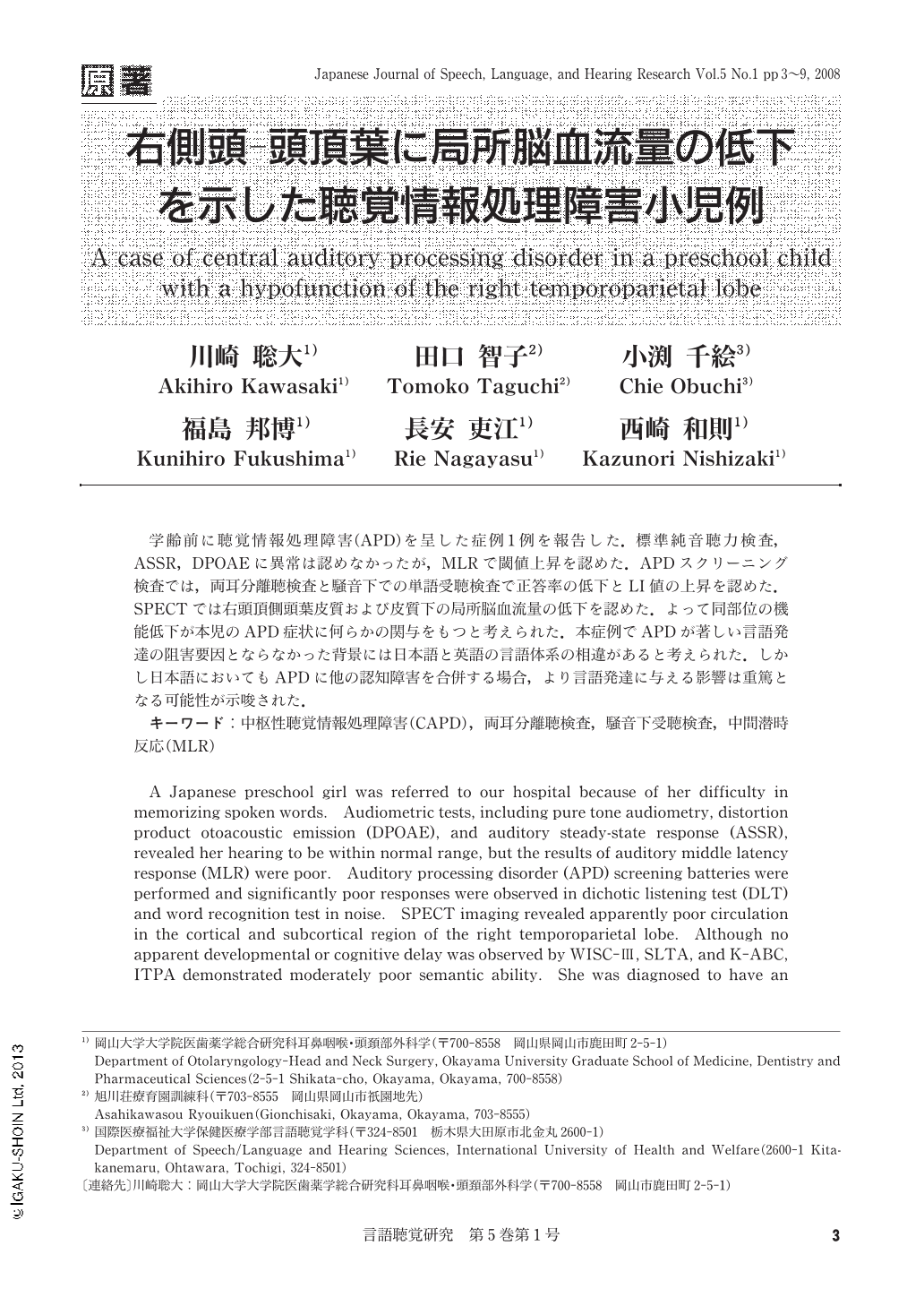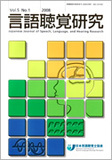Japanese
English
- 有料閲覧
- Abstract 文献概要
- 1ページ目 Look Inside
- 参考文献 Reference
- サイト内被引用 Cited by
学齢前に聴覚情報処理障害(APD)を呈した症例1例を報告した.標準純音聴力検査,ASSR,DPOAEに異常は認めなかったが,MLRで閾値上昇を認めた.APDスクリーニング検査では,両耳分離聴検査と騒音下での単語受聴検査で正答率の低下とLI値の上昇を認めた.SPECTでは右頭頂側頭葉皮質および皮質下の局所脳血流量の低下を認めた.よって同部位の機能低下が本児のAPD症状に何らかの関与をもつと考えられた.本症例でAPDが著しい言語発達の阻害要因とならなかった背景には日本語と英語の言語体系の相違があると考えられた.しかし日本語においてもAPDに他の認知障害を合併する場合,より言語発達に与える影響は重篤となる可能性が示唆された.
A Japanese preschool girl was referred to our hospital because of her difficulty in memorizing spoken words. Audiometric tests, including pure tone audiometry, distortion product otoacoustic emission (DPOAE), and auditory steady-state response (ASSR), revealed her hearing to be within normal range, but the results of auditory middle latency response (MLR) were poor. Auditory processing disorder (APD) screening batteries were performed and significantly poor responses were observed in dichotic listening test (DLT) and word recognition test in noise. SPECT imaging revealed apparently poor circulation in the cortical and subcortical region of the right temporoparietal lobe. Although no apparent developmental or cognitive delay was observed by WISC-Ⅲ, SLTA, and K-ABC, ITPA demonstrated moderately poor semantic ability. She was diagnosed to have an APD. Consolidation of a compensatory mechanism could be the choice intervention program of Japanese APD patients.

Copyright © 2008, Japanese Association of Speech-Language-Hearing Therapists. All rights reserved.


